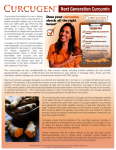Infant’s first 2.5 years crucial in healthy gut bacteria development, study reaffirms

Writing in Nature, an analysis of stool samples collected from 903 children strongly point to the first two and a half years of a child’s life as crucial to the structure and function of the gut microbiome.
The study points to little change past this age as research co-leader Dr Christopher Stewart, from Newcastle University’s Institute of Cellular Medicine, emphasises the benefits of breastfeeding to the immature gut.
“Breastfeeding has long been understood to be good for infants and epidemiological evidence shows being breastfed early in life is associated with lower risk of many later life diseases, such as allergy and obesity.
“Targeting the nutrients in breast milk that encourage the growth of healthy bacteria in the infant gut, or providing probiotic containing Bifidobacterium, represent important avenues for future research aimed at restoring the beneficial properties of being breastfed when breast milk is not available.”
A wealth of evidence has firmly established a link between Bifidobacterium and breastfeeding with this approach associated with higher levels of the Bifidobacterium species, B. breve and B. bifidum.
Another bacterial species, Bacteroides is also associated with the developmental phase, with higher levels of Bacteroides fragilis noted in infants delivered vaginally.
Bacteroides are also associated with increased gut diversity and faster maturation, regardless of the birth mode.
The benefits of these gut microbes are not lost on probiotic firms with the likes of Ferring (VSL#3), Bio-Kult’s range of advanced multistrain formulations and UK-based Provitality’s Probio 7 Probiotic, all containing one or more Bifidobacterium species in its products.
Study details
In a study involving Newcastle University scientists sequencing-based approaches were used to analyse 12,500 stool samples from 903 children in the TEDDY study, collected monthly from children aged three to 46 months old.
They found microbiome composition and diversity changed over time in three distinct phases: the developmental phase (3–14 months), transitional phase (15–30 months) and stable phase (31 months onwards).
Vaginal birth was associated with a temporary increase in Bacteroides bacteria. Siblings, exposure to pets, and geographical location were also factors in the differences between microbiome profiles.
The research also noted that weaned infants exhibited a rapid turnover in the bacterial community and a loss of most of the Bifidobacterium, replaced by bacteria within the Firmicutes phyla.
Firmicutes are typical of an adult microbiome and the appearance of these bacteria once breastfeeding was stopped occurred much quicker than the team expected.
“We know that the first few years of life are important for microbiome establishment,” said Dr Joseph Petrosino, group leader of the microbiome study and director of the Alkek Center for Metagenomics and Microbiome Research at Baylor College of Medicine in the US.
“You are born with very few microbes, and microbial communities assemble on and in your body through those first years of your life.”
“In this study, we took a closer look at the establishment of the microbiome over the first few years of life, and the early life exposures associated with that sequence of events, in this amazing cohort.”
Gut and diabetes
Conclusions drawn from this study are a supported in another paper featured in the same journal in which 11,000 stool samples from 783 infants were analysed in the TEDDY study.
Here, the early gut microbiome was characterised in children, some of whom went on to develop type 1 diabetes.
They report that the microbiomes of infants without type 1 diabetes harbour more genes related to fermentation and short-chain fatty-acid synthesis that, in combination with previous evidence, are associated with a protective effect.
Source: Nature
Published online: Doi: 10.1038/s41586-018-0617-x
“Temporal development of the gut microbiome in early childhood from the TEDDY study.”
Authors: Christopher Stewart, Nadim Ajami, Joseph Petrosino
















